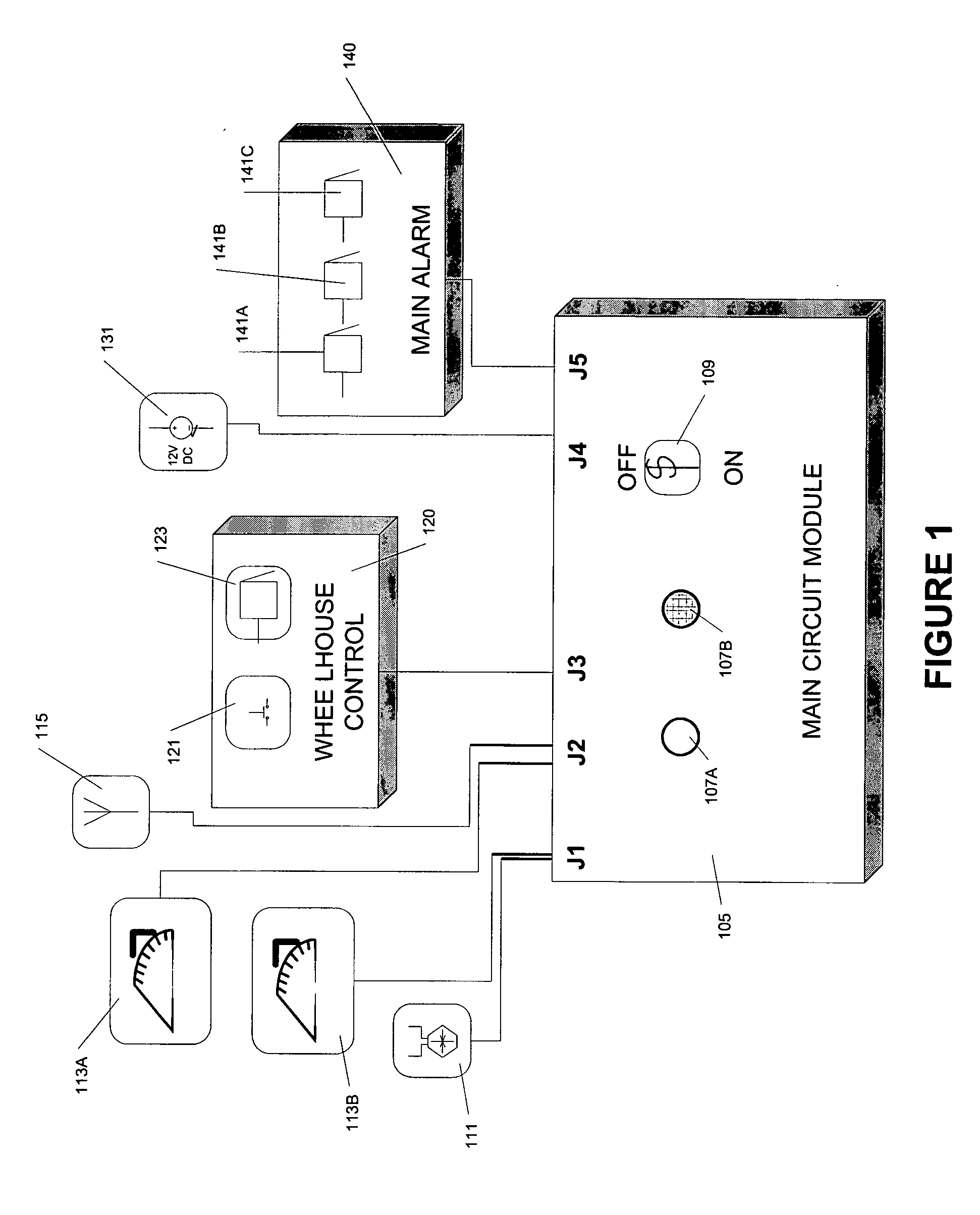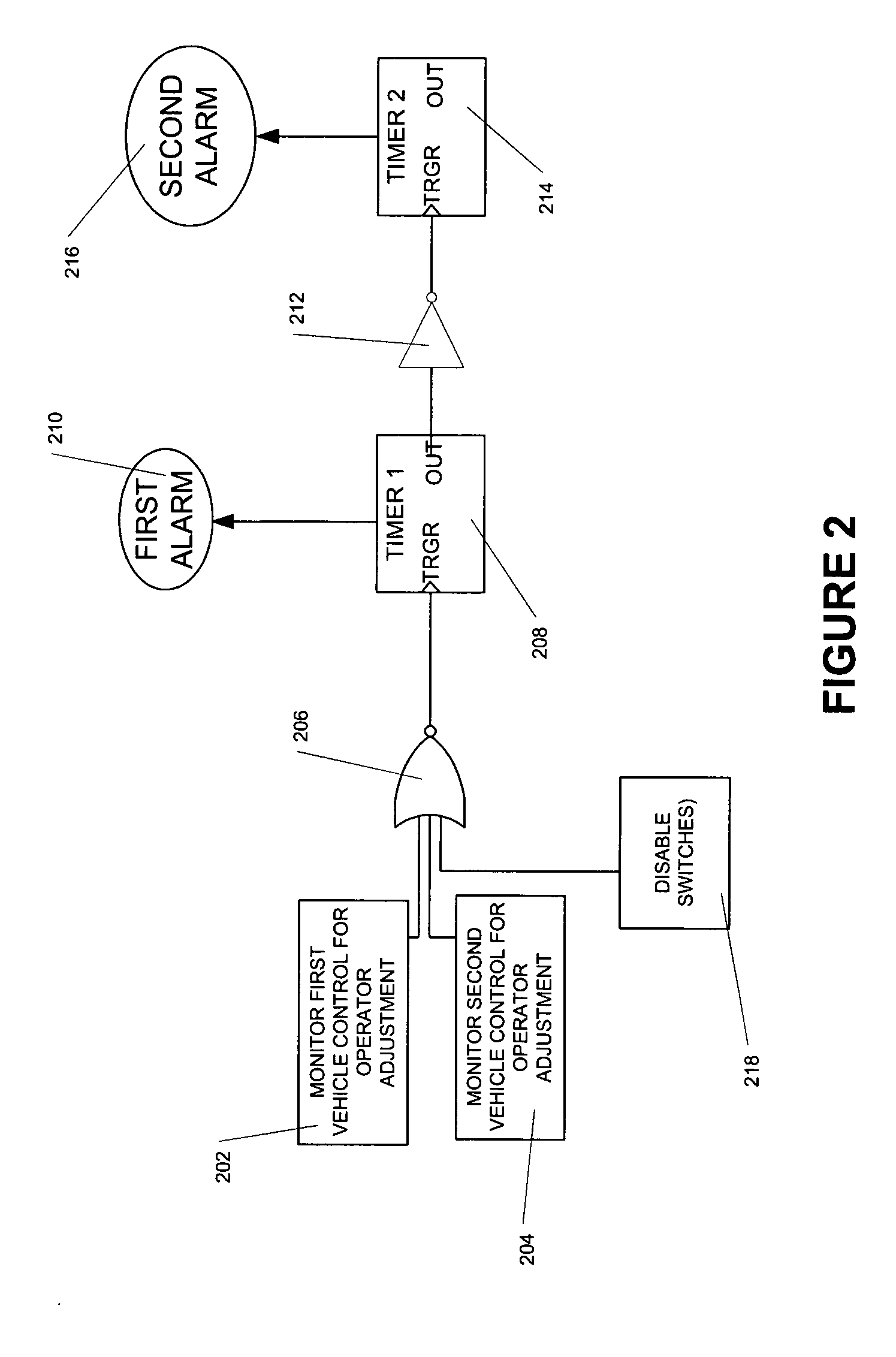Collision avoidance method and system
- Summary
- Abstract
- Description
- Claims
- Application Information
AI Technical Summary
Benefits of technology
Problems solved by technology
Method used
Image
Examples
Embodiment Construction
[0016] Collision avoidance systems discussed herein are based on the principle that certain vehicle controls are regularly adjusted by their operator or by an automated system under normal operation, and thus when the control ceases to be adjusted, one can assume that the vehicle is no longer under proper control. Collision avoidance systems of the present invention take advantage of this observation by monitoring one or more vehicle controls and sounding an alarm if it ceases to be adjusted.
[0017] While embodiments discussed herein are primarily directed to a barge tug, persons of skill will recognize that the invention may be applied to any type of vehicle such as ships, trucks, locomotives, and airplanes. It works especially well for vehicles operated by users over relatively long, monotonous trips, which makes them susceptible to falling asleep while in control of the vehicle. Similarly, with embodiments discussed herein, a tug's steering column is monitored as the vehicle cont...
PUM
 Login to View More
Login to View More Abstract
Description
Claims
Application Information
 Login to View More
Login to View More - R&D
- Intellectual Property
- Life Sciences
- Materials
- Tech Scout
- Unparalleled Data Quality
- Higher Quality Content
- 60% Fewer Hallucinations
Browse by: Latest US Patents, China's latest patents, Technical Efficacy Thesaurus, Application Domain, Technology Topic, Popular Technical Reports.
© 2025 PatSnap. All rights reserved.Legal|Privacy policy|Modern Slavery Act Transparency Statement|Sitemap|About US| Contact US: help@patsnap.com



